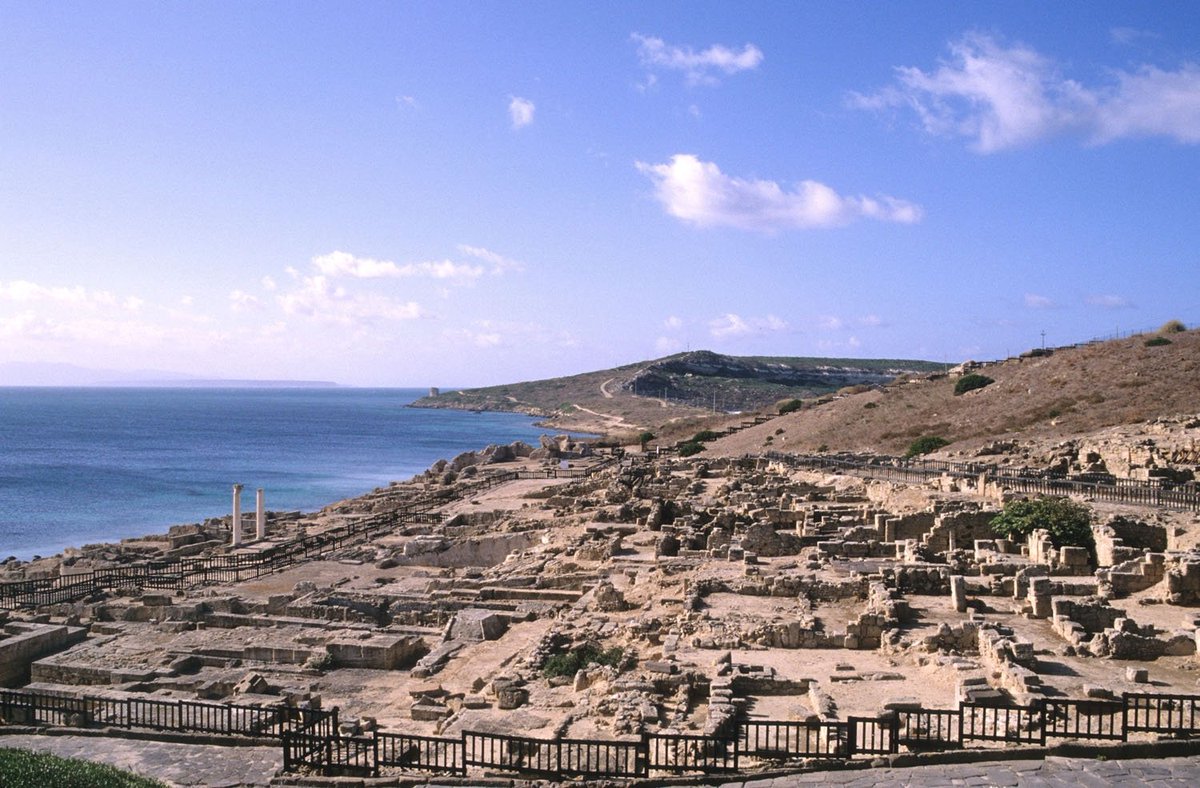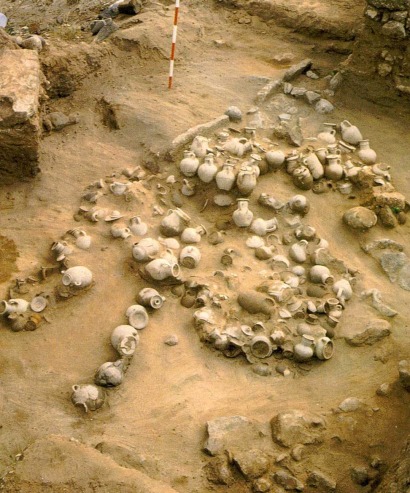**THARROS: Nuragic, Punic, Roman, early medieval site**
Thread about the Punic-Roman town of Tharros (Oristano), founded over a Nuragic village. #Sardinia #Nuragic #Punic #Roman
Thread about the Punic-Roman town of Tharros (Oristano), founded over a Nuragic village. #Sardinia #Nuragic #Punic #Roman

Tharros rises in the peninsula of Sinis, ending in Capo San Marco, which divides the gulf of Oristano and the Sea of Sardinia. The Sinis is an important archaeological area, covering many important Nuragic sites, tombs and nuraghes. Each dot in the map is one. 



From this area are the tombs of Cuccuru is Arrius, where we found the most famous Mother Goddess. There are many nuraghes and a little higher up there's the site of Mont'e Prama, with its giant statues of the Nuragic Age, the first all-round statues to be found in Europe. 





It's also the site of the Byzantine church of San Giovanni di Sinis, one of the very first churches in Sardinia, which has its own hypogeum with medieval tombs. 



Tharros begins its life as a Nuragic village, now visible only in part in the rounded constructions. This village, now known as Murru Mannu, dates to the Middle-Late Bronze Age. The village was abandoned for some reason before the Phoenicians came (fear of raids from the sea?) 

In the peninsula there are at least 3 nuraghes, one of them called Baboe Cabitza ⬇️.
Phoenicians came around VIII-VII century BCE and took place in the area, as showed by some tombs excavated in the sand where the ashes where kept. There are two different necropolis of this time
Phoenicians came around VIII-VII century BCE and took place in the area, as showed by some tombs excavated in the sand where the ashes where kept. There are two different necropolis of this time

Carthaginians arrived instead in the VI century BCE, we know with some resistance by Sardinians in general, but in Tharros we don't find traces of battle. It's during the Punic period that Tharros effectively became a town and was expanded. Fortifications were built all around-- 



-the town. From this time it's also the tophet, Phoenician/Punic necropolis for children, still debated if they were sacrificed or just died too young to be with the adults.
There are also religious sites, a temple which saw later modifications in Roman times. There are tombs-

There are also religious sites, a temple which saw later modifications in Roman times. There are tombs-


-in the Punic taste of large rooms and many precious artifacts, thoroughly stolen by everyone (locals, academics, kings, "tourists") after the rediscovery of the site in ~1830. Many golden bugs and jewels in the Egyptian style come from here. 







The Romans arrived in Sardinia around 238BCE, but had to face a strong resistance by Sardinians and Carthaginians and the mix of the two. But Romans eventually took control with the strength and Tharros grew even more, and it's what we mostly see today.
Older structures have -


Older structures have -



-been changed or destroyed to build new fortifications, roads, temples. They built an aqueduct, thermae with all the environments it involved, sewers.
But when the Romans eventually fell too, the people took the place again, using the structures as the first Christian sites-


But when the Romans eventually fell too, the people took the place again, using the structures as the first Christian sites-



-and churches.
Tharros was the first capital of the Judicate of Arborea and the Bishopric, but with the danger of the Moors' incursions from the sea, the capital was moved to Aristanis (Oristano) in the XI century.
In the XII century, Tharros was already in ruins.
Tharros was the first capital of the Judicate of Arborea and the Bishopric, but with the danger of the Moors' incursions from the sea, the capital was moved to Aristanis (Oristano) in the XI century.
In the XII century, Tharros was already in ruins.

• • •
Missing some Tweet in this thread? You can try to
force a refresh














